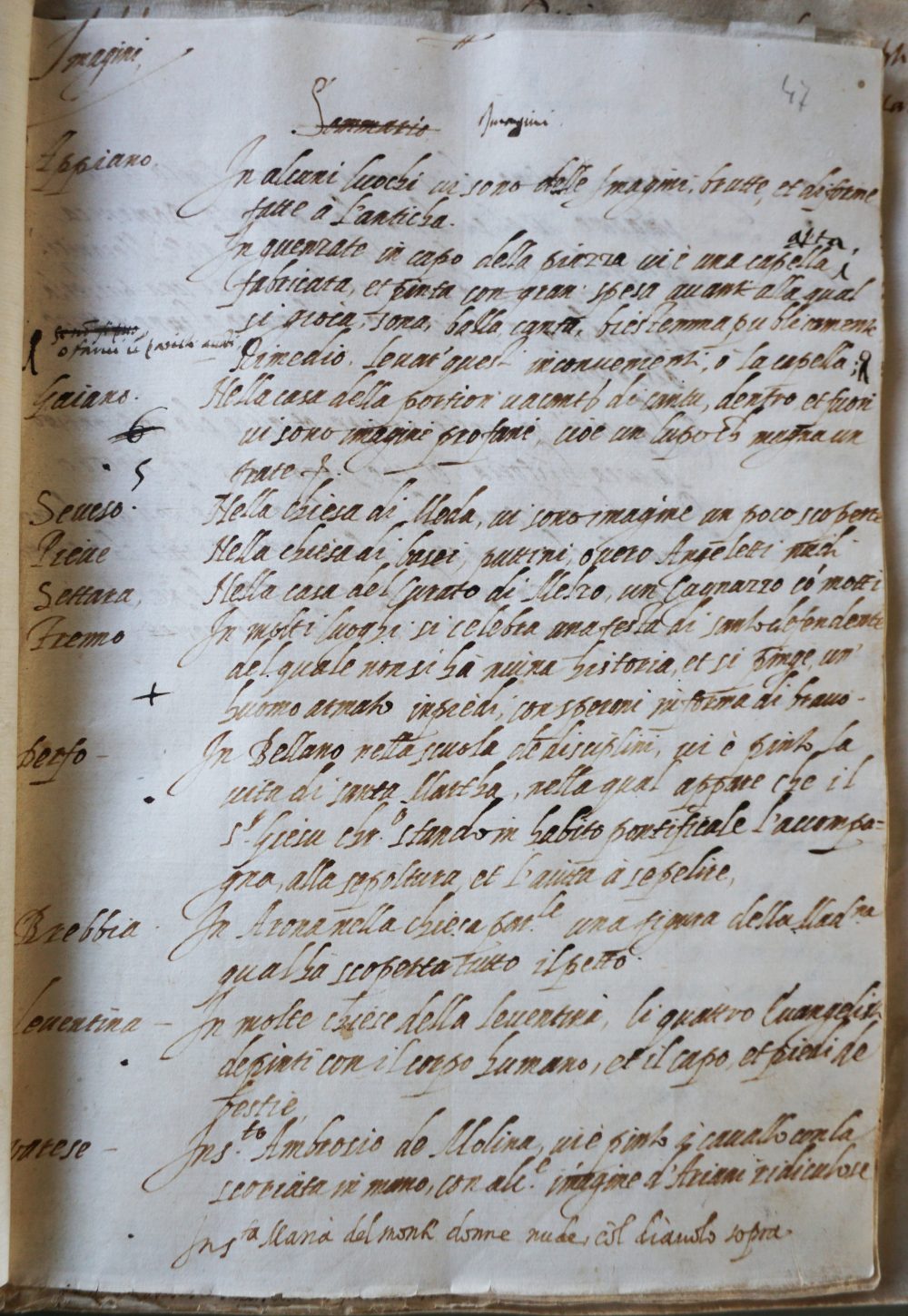
Milan, Archivio storico diocesano, MS Archivio Spirituale, Sezione XIV, vol. 67, Indici vari, f. 47r. © Archivio storico diocesano di Milano
The case described here comes from a 16th-century document preserved in the Diocesan Archives of Milan, in which fourteen works of art that needed to be amended or destroyed are listed. This list would appear to present the results of an inquiry into paintings, sculptures and sacred buildings that did not comply with the decrees of the Council of Trent, carried out in the dioceses of Milan at the request of Archbishop Carlo Borromeo, probably around 1576 (on the contents and the date of the document see Lurati 1968 and 1970; De Boer 2001, 223; Debernardi, forthcoming).
Concerning the area of Appiano, the document states that “in some places” there were “ugly and misshapen images, done in the old style” (“fatte l’anticha”). This last expression, which could literallybut misleadinglybe translated as “done in the ancient style”, is evidently employed here to describe Romanesque or Gothic artworks (for other examples of this usage see Maritano 2007). In the eyes of the Church officials of the Archdioceses of Milan, a sacred image could therefore be considered undignified if it did not adhere to contemporary Renaissance standards, even if its contents were otherwise irreproachable. While stylistic concerns of this kind are usually absent from Counter-Reformation writings on the control of sacred art, more general warnings regarding the decorum of religious representations were reiterated continuously following the Council of Trent (Alberigo 1973, 776). In line with this preoccupation with decorum (albeit without his prescriptions mentioning style), Carlo Borromeo issued precise guidelines for the restauration and disposal of old sacred artworks that had been damaged by the passage of time (Ratti 1890, 308).
“In some places there are ugly and misshapen images, done in the old style.”
“In alcuni luochi vi sono delle imagini, brutte, et diforme fatte à l’anticha.”
Wietse De Boer, The Conquest of the Soul: Confession, Discipline, and Public Order in Counter-Reformation Milan, Leiden-Boston-Köln: Brill, 2001; Lea Debernardi, “Identifying and Censoring Improper Artworks in Carlo Borromeo’s Diocese: The Sixteenth-Century Index of Profane Paintings in the Milan Diocesan Archives”, forthcoming; Ottavio Lurati, “Superstizioni lombarde (e leventinesi) del tempo di San Carlo Borromeo”, Vox Romanica, 27, 1968, pp. 229-249; Ottavio Lurati, “Pene ai bestemmiatori, indulgenze, reliquie e ‘immagini profane’ nella Diocesi milanese (e nelle Tre Valli) ai tempi di San Carlo”, Folklore suisse/Folclore svizzero, 60, 1970, pp. 41-50; Cristina Maritano, “‘A l’antica: non de’ Greci o Romani, ma di que’ tempi’. Immagini del Medioevo nell’età di Emanuele Filiberto e di Carlo Emanuele I”, in Giuseppe Vernazza e la fortuna dei primitivi. Atti del convegno, Alba 11-12 novembre 2004, Auditorium della Fondazione Ferrero, Alba: Fondazione Ferrero, 2007, pp. 17-41.



